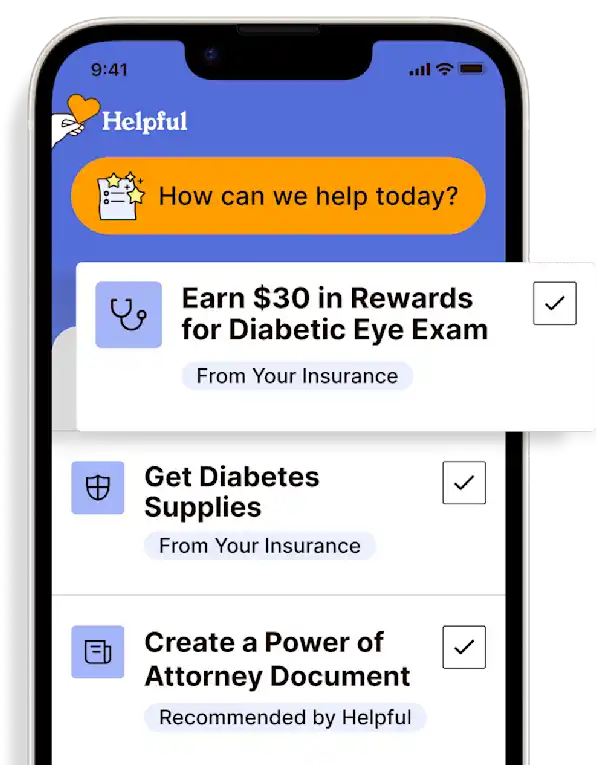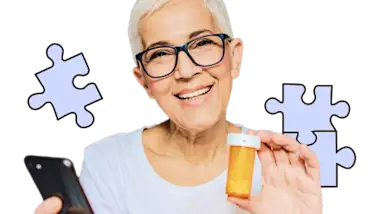VNS Health EasyCare: Bone Mass Measurement (Bone Density or BDM)
1 in 2 women over age 50 will break a bone because of osteoporosis. Osteoporosis does not have symptoms and is usually discovered after a fracture.
Access all my benefitsGet insurance benefits, legal documents, and medical records in one place
How To Receive
Details on how to apply
Obtain an in-network provider order for bone mass measurement.
Schedule the test at an in-network facility selected by the provider.
It is likely that the scheduling department of that facility will reach out to schedule the test.
Attend the appointment and complete the test.
If transportation is needed to and from the appointment:
Call (877) 718-4219 (TTY: 711), M-F 8am-8pm, at least 48 hours in advance of the needed transportation.
Have the date, time, location, and reason for transportation ready when calling.
Receive authorization and guidance on scheduling the transportation service.
Get confirmation of scheduled transportation.
Use the transportation service to and from the appointment.
Get more support and guidance on insurance benefits, medical records and legal forms.
Helpful brings together your insurance benefits, legal documents, and medical records in one personalized place — so you always know what you have, and never have to search again.

Bone mass/density, or the structure and strength of our bones, affects our ability to move, bear weight, stand erect, and maintain muscle. It is even associated with changes in blood cell production (red blood cells, white blood cells, and cells that respond to invasion and infection). As we age, we are at higher risk of progressive bone density loss, which can lead to osteoporosis, especially in women.
A bone mineral density (BMD) test is used to measure bone mineral content and density, generally in the large bones (hips, femurs, spine), which gives us an idea of overall bone health. This is done using X-rays, dual-energy X-ray absorptiometry (DEXA or DXA, which is the most popular), or a special CT scan that uses computer software to determine bone density of the hip or spine. Ultrasound and blood tests may also be used.
Low bone density can have significant consequences, including increased risk for fractures and development of osteoporosis—a condition where low bone density causes holes inside the bone to widen and the outer walls, or cortex, of the bone to become thin, making bones more brittle and fragile. The most serious complications of osteoporosis are spine and hip fractures, which can result in extensive surgeries and be life-limiting (shortening the lifespan) or even life-threatening (death).
Qualified individuals are those at risk of losing bone mass or at risk for osteoporosis: advanced age (80+), post-menopausal women (especially Caucasian and Asian), endocrine disorders (diabetes is the biggest), family history, poor diet and lack of calcium and vitamin D intake, long-term use of certain medications, and poor lifestyle habits (smoking and excessive drinking). Covered services are procedures to identify bone mass and detect bone loss or determine bone quality, including a physician’s interpretation of the results.
Technology for Health Tasks. Mental Health for the Tough Stuff.
Helpful connects your medical records, insurance, and caregiving tasks automatically. And when you need more than logistics, a therapist is here to guide you.
In-Network and Covered
For Individuals, Couples and Families
HIPAA Compliant, Data Stays Private


Healthcare Tasks Simplified

From syncing records to spotting drug interactions, Helpful does the heavy lifting, turning complex health info into clear tasks and showing you benefits you can actually use, giving you clarity and control over your care.

In-Network Mental Health

Our licensed therapists are here to support you and your loved ones through stress, burnout, and life’s hardest moments, with an inclusive, compassionate approach that works with most insurance plans.

Create Legal Documents

Plan ahead by creating will, trusts, advance directives and more, that ensure your wishes are honored in the event you can’t speak for yourself -with Helpful guiding you every step of the way.